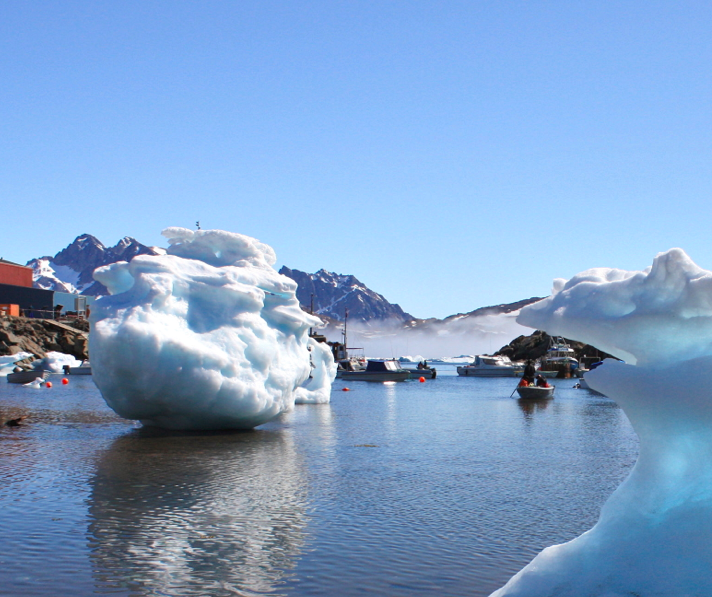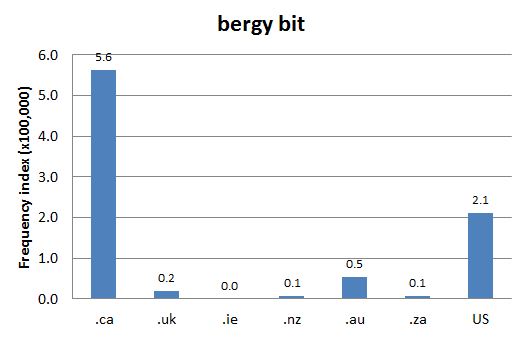DCHP-2
bergy bit [bεrgi bɪt] bergy-bit DCHP-2 (October 2016)
n. — especially Atlantic Canada, Outdoors
a small iceberg (see Image 1).
Type: 5. Frequency — The earliest known Canadian and US attestations of bergy bit are from the same newswire story on US explorer Lincoln Ellsworth, detailing his Antarctic expedition (see the 1939 quotation). The first British attestation comes from the Geographical Journal of the British Royal Geographic Society in 1935 (see OED-3, s.v. "bergy" [b]). Although bergy bit appears to be a colloquial term, it is used by both the US National Ice Centre with the definition "a medium to large fragment of ice. Its height is generally not greater than 5 meters above sea-level and its area is normally about 100-300 square meters" (see USNIC reference). Environment Canada defines it as "a piece of glacier ice, generally showing 1 to less than 5 m above sea level, with a length of 5 to less than 15 m. They normally have an area of 100-300 m2" (see Environment Canada reference). The term appears to be a diminutive of iceberg. Bergy bit is prevalent in Canada (see Chart 1).
See also ITP Nelson, s.v. "bergy bit", which is marked as "Atlantic Canada", OED-3, s.v. "bergy" (b), and W-3, s.v. "bergy bit".See also: ballacater growler clumper
References:
- Environment Canada "Ice Glossary" Accessed 5 Nov. 2013
- ITP Nelson
- OED-3
- USNIC "FAQ" Accessed 5 Nov. 2013
- W-3
Images:

Image 1: Bergy bits near Tasiilaq, Greenland. Source: Wikimedia Commons. Photo: C. Zenino
Chart 1: Internet Domain Search, 5 Nov. 2013
